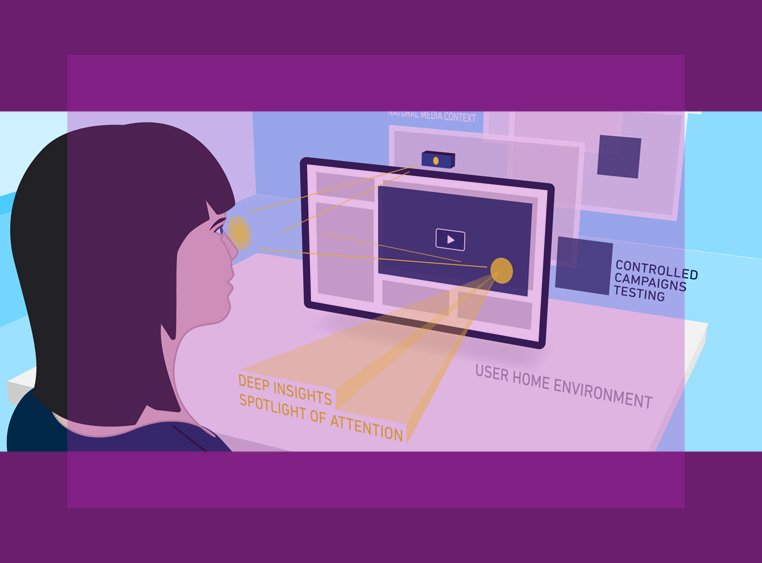Attention measurement with 1,000 people within 3 days? Half of them in rural areas all over Germany? And at a reasonable cost? A few years ago this is something we would not have thought possible.
Today we can measure eye movements online with people who are home sitting in front of their PCs. They allow us temporary access to their webcam, and with the webcam we measure their eye movement. This is revolutionary and is a huge saving in costs and time.

The Contact Measurement indicates how strongly an element draws our eye. It measures how likely it is that we contact an element and how determined we are in it’s selection. It is used for processing the following questions and optimizations:
Learned look and learned overlook (disregard)
Eye Tracking identifies trends in viewing behavior of your target group. A statistical analysis over various times shows that whether format, placements and creatives are preferred or shunned is dependent on previous user experience. Based on expectations and viewing behavior, intuitive content, preferred display formats and motifs can be selected.
Salience and purchasing decisions
How striking is your product? Does it differentiate itself from the environment of your competitors? The art of being visually different and attracting attention early often determines whether a product is purchased.
Measure and optimize visual layout
Is it possible to draw attention to a certain element of a design? The ability to quickly find information requires a definite visual organization. This can be measured and optimized with the aid of Eye Tracking.
Only after the viewing can we clearly see a motive. A continued focus reveals that it is relevant for our purpose or speaks to us emotionally.
The characteristics of focus are as follows:
Relevant or disturbing?
We decide in less than 2 tenths of a second whether what we notice from the corner of our eye corresponds to our expectation and goals. Short contact with eye catching, but not relevant elements, negatively affect our media experience. On the basis of an Eye Tracking measurement information and motifs can be selected and positioned optimally for the relevant user experience.
Communication needs introduction and motivation
Introductory picture motifs and lines of text should not only hold attention but also generate motivation for viewing connected content. A corresponding transition of the gaze marks an important deepening of attention of the viewer to active exploration of the content.
Memorable highlights
Images and scenes that repeatedly bind and forward the attention can become an anchor and a highpoint of your communication. The deepening of the central theme has a decisive influence on how sustainable and influential contact with your brand is.
The Exploration parameter indicates how completely the visible information of a media element has been processed. It is a measure of the viewer’s interest in the content of the media element.
Message transfer or termination of the communication?
A premature termination of viewing or skipping of information are indications that content has not be transmitted as planned. Eye Trakcing shows the points at which content viewing was cancelled and what information has been skipped.
Successful contact can be short
Eye Tracking studies show that successful brand communication can be achieved in 2 seconds of visual processing. Eye Tracking enables the selection of a suitable media context and consideration of the communication efficiently.
Attention measures interest more accurately than interaction
Our interest in content or an object appears most directly in a complete visual processing of all associated visible information. Whether we make up our minds with a click or an interaction with an object, it is strongly influenced by situational factors. Eye Tracking data enables us to react to the interest of the target group and to encourage that interaction.